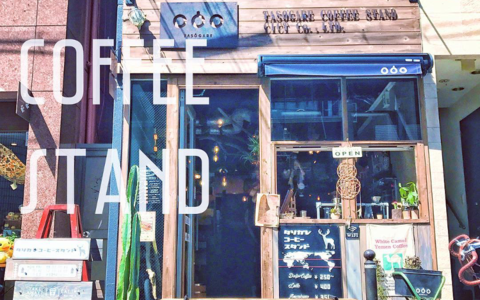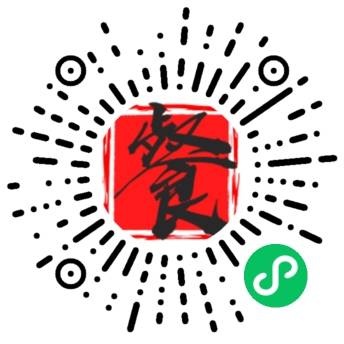▲Click “FBIF食品饮料创新” inblueto follow
Reply number “3″to join in F&B WeChat Group
Written by: Jenny Ma
Edited by: Wilbur Zhu (WeChat ID: aotokuer), Anna HU,Hestia Zhang
Wei Chuan (Wei Chuan Foods Corporation) is a famous Taiwan-based food manufacturer of Chinese condiments, dairy beverages, oil products and various other kinds of food. In recent years, its juice brand Daily C has renewed its packaging, which created social media buzz and became one of the most successful marketing cases in 2016. What motivates the rapid growth of Daily C? What’s the trick of its new packaging?
On Apr.20, Tato Jiang, Head of Wei Chuan’s Chilled Beverage Marketing Department, shared with us the developing history of Wei Chuan Daily C and the secret behind its successful marketing cases.
The Development of Daily C Was No Smooth Course
Wei Chuan Daily C, a 100% Chilled Juice rarely seen in domestic market, was born in Shanghai in 2001. A pure, tasty, natural, fresh and healthy brand image was built after entering Jiangsu and Zhejiang markets. In 2007 and 2008, Wei Chuan extended its products to fruit and vegetable juice. Since 2008, it has an average annual growth of 20%. From 2009 to 2011, it once again appointed Angelica Lee as spokesperson, while expanding into Beijing and Guangzhou. The advertising message was “as fresh as newly picked” from 2012 to 2014 and “drink juice every day” in 2015. Wei Chuan witnessed negative growth in 2014 and managed to recover through a series of rapid marketing activities. Daily C had a 43% sales growth and 26% market growth in 2016, ranked first in the peak season.
Redefining Target Group Based on Consumer Insights
The problem arose in 2014. While the product was fresh, natural, healthy and tasty, its sales slumped unexpectedly. Mr Jiang pointed out that the problem was the lack of vitality and the inaccurate product positioning. Wei Chuan soon adjusted the orientation of the brand, aiming at 20- to 30-year-old young white-collars hoping to lead a healthy life. They changed the new brand appeal to “drink juice every day” and used mobile phones and videos as communication tools, which is popular among the target group.
The redefinition of target group should be based on consumer insights. Mr Jiang has quite a good understanding of people in their 20s. Those white-collars pursue a healthy and high-quality lifestyle, while in fact living under great pressure in second and first-tier cities. “You’re busy, striving, tired, crazy, drunk. You have no time and stay up at night…” These tags reflect their current situation so well that they’re sure to be touched.
Mr Jiang has also mentioned the concept of “compensation mentality”. For instance, young men addicted to smoking would drink a bottle of Daily C’s grape juice for compensation. Consumers might be too busy to live healthily as they wish to. Under such circumstances, Mr Jiang hopes to fulfill their demand in another way, referring to the idea that “for each one bad habit you can’t get rid of, you should cultivate one good habit to make it up”. Therefore, Wei Chuan Daily C provided consumers with the idea of “drinking juice every day”.
Daily C knows where are the best fruits, best techniques and what’s best for consumers – in other words, passing on the value of the fruits. Another perspective can explain this: connecting nutrition value with consumer demand. “Worried about getting inflamed? Drink Wong Lo Kat”, or “A bottle for breakfast keeps you vigorous the whole morning” are two great examples.
What Are the Secrets Behind “Reason Bottle”,“Hi Bottle” and “Spell Bottle”?
Wei Chuan has made great innovation in packaging and promoted “Reason Bottle”, “Hi Bottle” and “Spell Bottle” one after another. Mr Jiang offered his analysis.
The first is the “Reason Bottle”. Research shows that only 26% of consumers have noticed differences between the new packaging and old ones. There is, however, a significant change. Moving down the brand’s Logo, for instance, is actually a dangerous attempt. But from a consumer’s perspective, looking top-down, the message such as “to be beautiful, you should drink juice” seems clearer.
“Hi Bottle” strengthens consumer participation. Not only the bottle is able to “talk”, but also the consumers. “Hi Bottle” leaves a blank for consumers to write on their own and then give it to another person, who will be happy to receive it and willing to pass it on. In this process, consumer participation is improved, leading to a larger communication scale. Mr Jiang also mentioned that young women in their 20s love watching the drama “Love O2O”. Thanks to the marketing team’s prophetic vision, Daily C got popular with just a one-time product placement. Mr Jiang attributed its popularity to a series of preparation, combining the drama to the “Hi Bottle” and, most importantly, attaching the lines to them. “What a coincidence, Mr Xiao.” “It’s not. I’m waiting for you.” This was a successful placement.
Next one is “Spell Bottle”. Mr Jiang said that Daily C sold well in summer, but it was hard not to go slack in the slack season. Daily C suggest you drink more juice in winter to improve resistance. To print “resistance” on the bottle is against Food Safety Law, so the company came up with the idea of spelling. Apart from “Resistance”, there were also words like “Keep me warm”, “Don’t catch cold”, “Rich in Vitamin C” and “You look great”. Consumers soon bought into this interesting idea, keen on placing the bottles together. Jin Xing once posted a photo with one of the bottles on Weibo, showing the love between she and her husband. This post received more than 200 thousand likes and 15 thousand comments, creating high media value. Consumers started to reply and post their own photos. The secret here is how to involve consumers in a simple way without getting them embarrassed. Too many marketing activities have been embarrassing, such as “take a picture with our product and you might win ¥4999 travel fund”. They’ll think, “Seriously? It’s not like I can get it anyway…”
Four Keys to Successful Marketing
Firstly, brand should make friends with consumers, then become a “Briend”.
Secondly, an interesting and funny fundamental element is needed. Whether it’s interesting or not is up to the consumers, rather than the company.Also, it should be easy to share. Everyone has a mobile phone now, so taking a photo is the most convenient way, without skills or tricks.Last but not least, it should be highly interactive, engaging consumers in an effective way.
Food & Beverage Innovation Forum 2017(FBIF2017) was held in Shanghai from April 19th to 21st, 2017. The theme of FBIF2017 is“Global Innovation, Powering Future!”.Topics include Trends, R&D, Marketing and Packaging. 1500+ attended. Speakers include:Zhang Jianqiu, Executive President, Yili Group;Stephen Maher, President, Mondelez China;Zhou Li, Secretary of the Board, Ph.D, Nongfu Spring;Yan Weibin, Chairman, Ausnutria;Craig Slavtcheff, Global VP, R&D, Campbell Soup;Zhang Liaoyuan, Founder, Three Squirrels;Jet Jing, VP, Alibaba Group;Martin Suter, Head of eCommerce, China at AB InBev.For more please reply “FBIF” . / Tips / Click the Menu “FBIF” to view “Agenda“, “Speakers“, “Partners” and other On Site Activities Reply “attendee“, “photo“, “news” to get related information. For other key words, pls reply “keywords“ / Read More/ 360: Let People Be Connected by Effective Branding Brand Socialization Opportunities in the Digital Marketing Era Exclusive | Tencent Reshapes FMCG Marketing with 3 Moves Coca-Cola’s Marketing Legend Creator Shared Secret of Marketing Share a Coke: How the Groundbreaking Campaign Got Its Start /WeChat Groups / Long Press this QR Code to follow“FBIF“. Reply number “3” to join inCEO,R&D,Marketing,Packaging,Functional Foods,Dairy,Beverage,Snacks, etc. WeChat groups(Group members include seniors from Nestle, Coca-Cola, PepsiCo, AB-InBev, Yili, Mengniu, Master Kong and Nongfu Spring etc.) ▲follow us and”Sticky On Top”
原创文章,作者:网络转载,如若转载,请注明出处:https://www.qiyu88.com/188490.html















